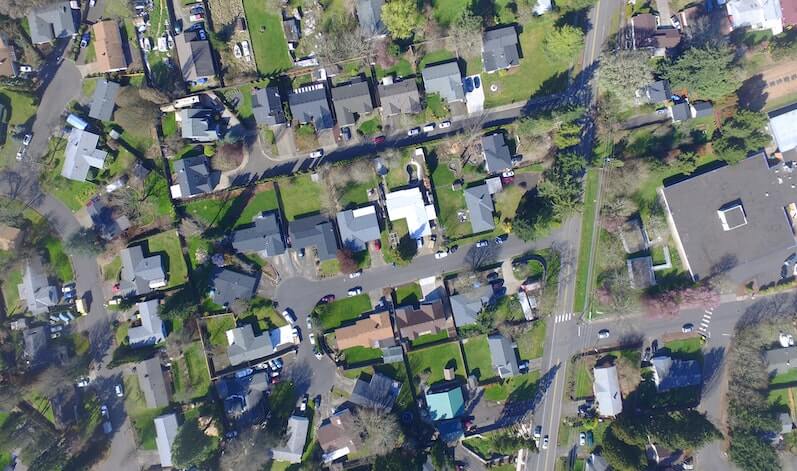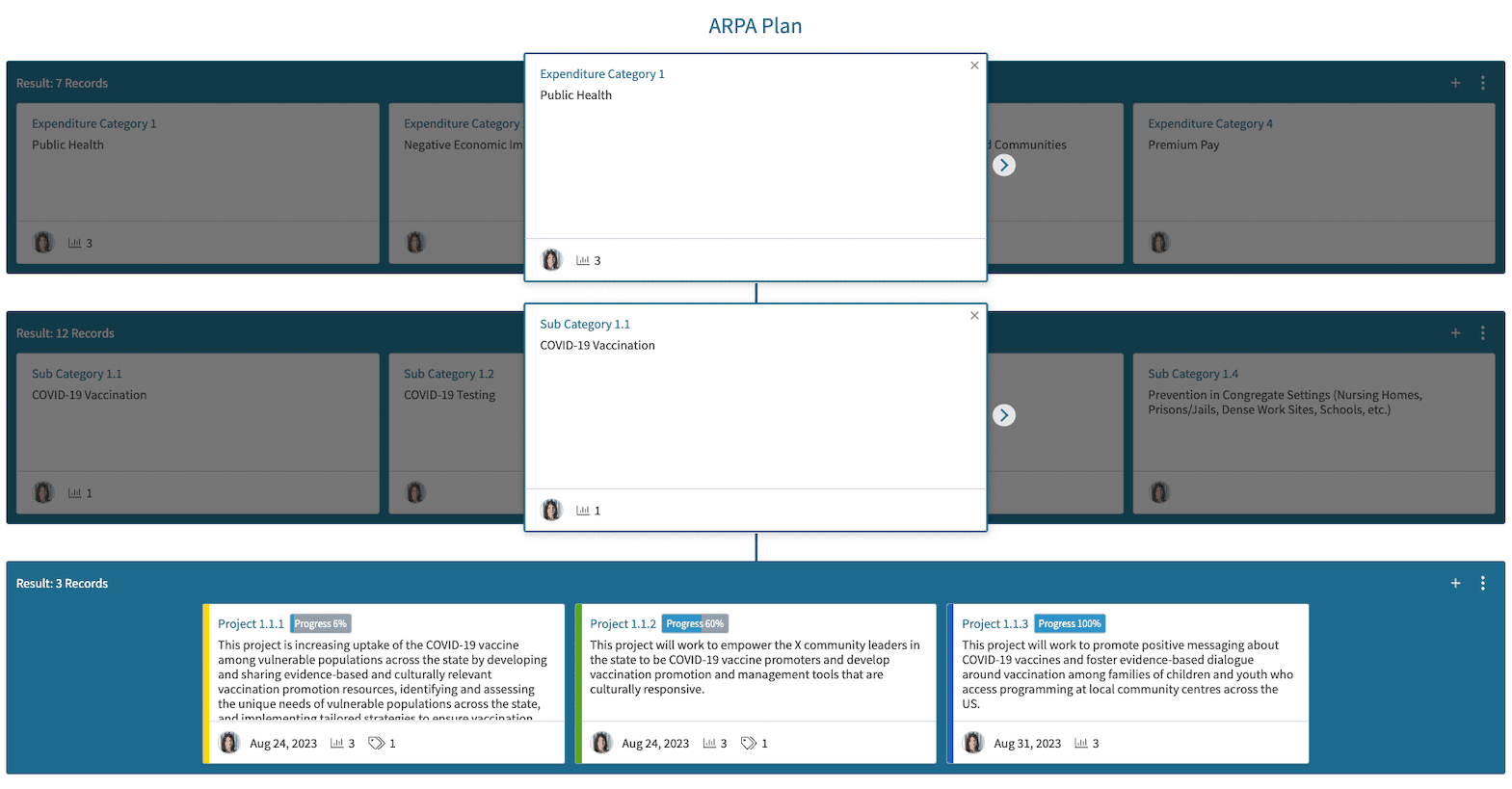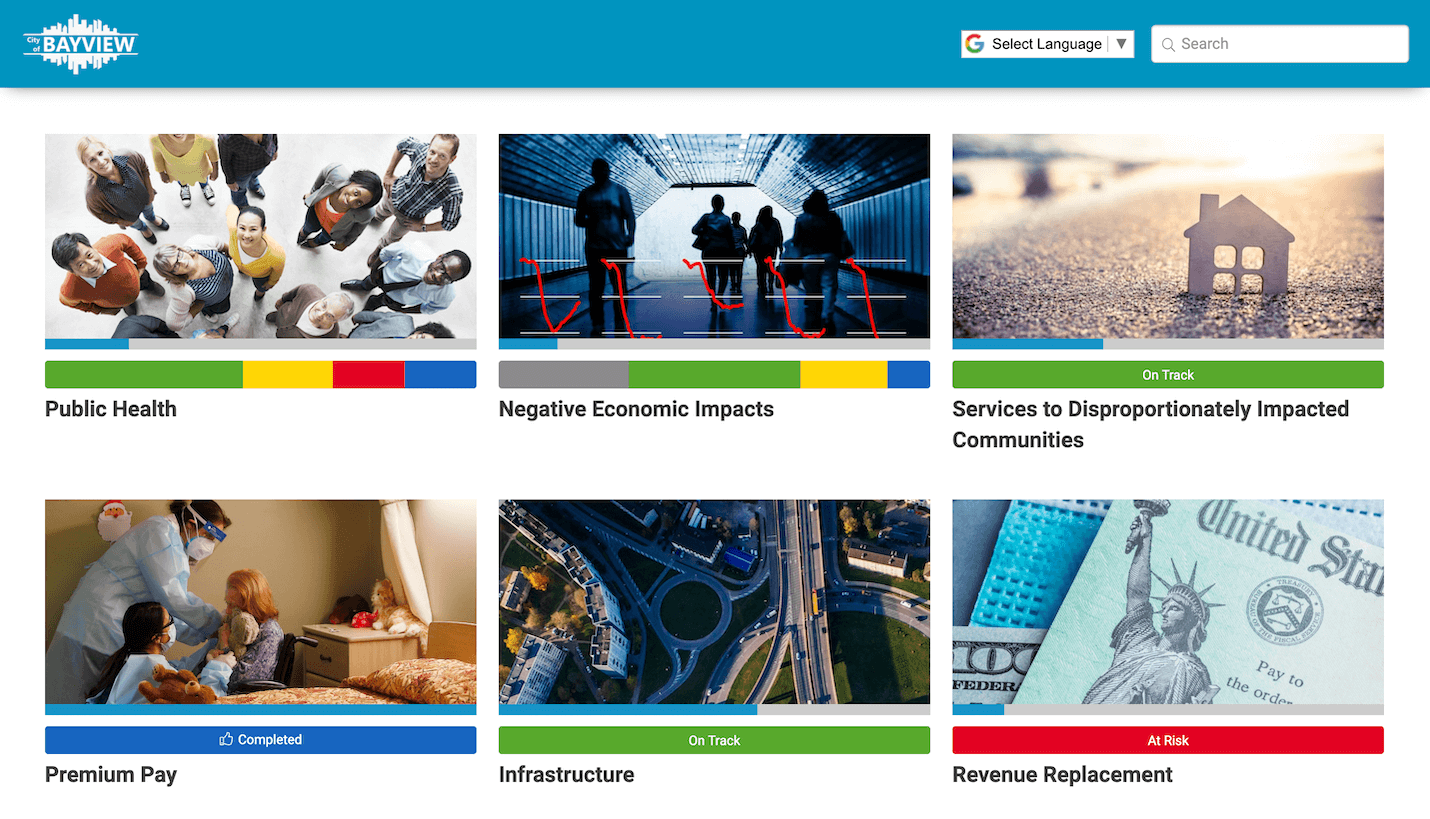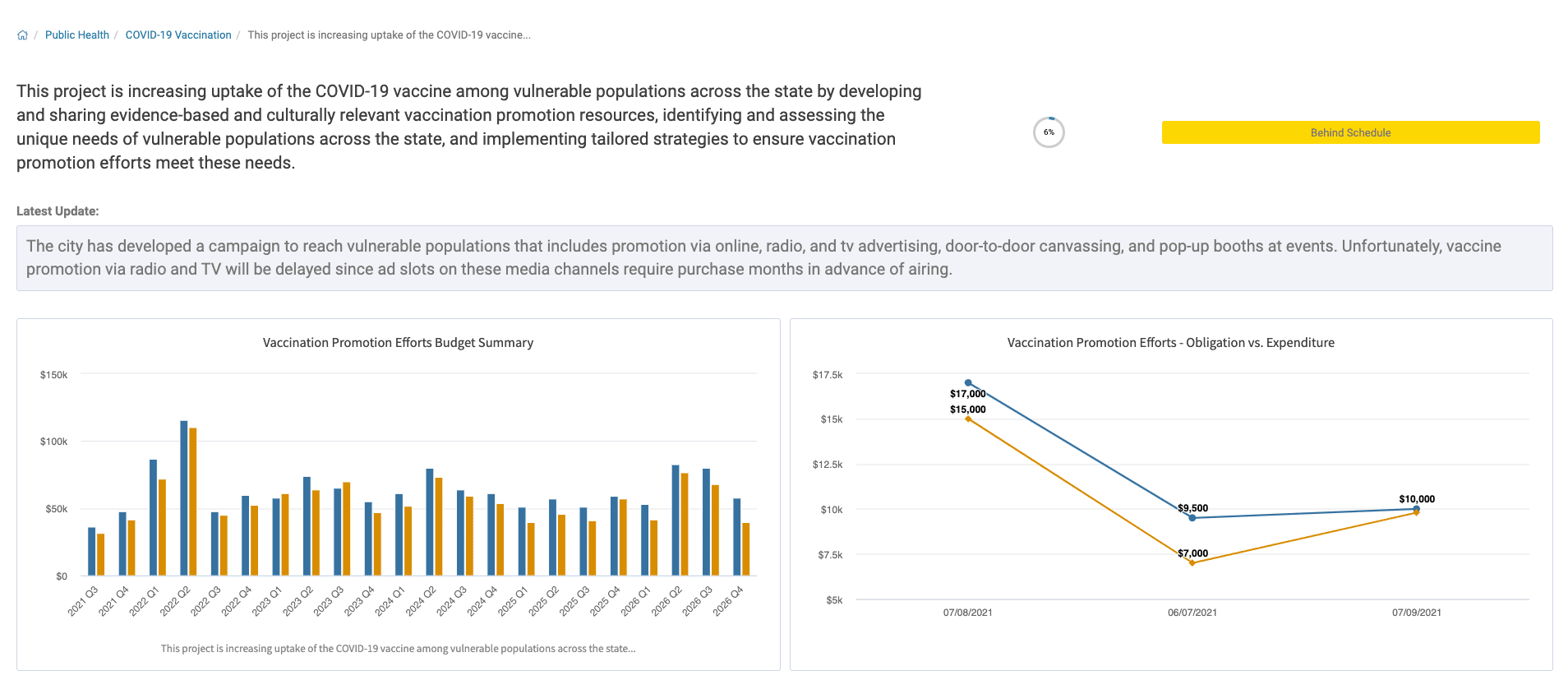
Contents
When the Treasury’s Interim Final Rule was released in May, community engagement, accountability and transparency became baked into the American Rescue Plan Act (ARPA).
As well as some general language emphasizing the importance of these themes, the Interim Final Rule (and subsequent State and Local Fiscal Relief Funds Compliance and Reporting Guidance (SLFRF)) provided guidelines for the different types of reporting required of local governments receiving ARPA funds.
Most will be well aware of the mandated quarterly Project and Expenditure report and— for counties and metropolitan cities with populations over 250,000—the annual Recovery Plan Performance report.
These reports are required to be sent to the Treasury on either a quarterly or annual cadence.
However, they must also be posted on a “public facing website” to inform the relevant communities as to where and how the ARPA funds are being spent. This is in keeping with the SLFRF Reporting Guidance which lays out four principles to ensure an equitable economic recovery: Accountable, Transparent, User Friendly and Focused on Recovery.
At Envisio, we’ve been supporting local governments in their efforts to be more transparent and accountable for over a decade.
We wanted to share some of the ways we’ve been working with local governments to help meet the ARPA reporting requirements and, more broadly, to build trust and transparency with their communities around the use of this historical level of funding.
Trust, transparency & the American Rescue Plan – what you need to know
Our conversations with local government leaders tell us that demand for accountability and transparency in government institutions has never been higher. Residents are increasingly well-informed and, often, involved in politics at a local level. Fortunately, social media and other technology platforms, such as Polco and Bang the Table, offer more avenues than ever for government agencies to listen, respond, and proactively engage with residents.
We also know that trust in our institutions is at an all-time low. A recent Deloitte survey found only 26% of respondents rated their local governments as trustworthy, and even less believed the federal government to be so (18%).
We believe that regaining trust is the pathway to building thriving communities. Trusted government agencies are much more able to act decisively on policy making, budgeting and strategic initiatives. And if we think of trust in this light, it becomes the conduit through which progress is possible.
However, the American Rescue Plan Act is not just about progress, but demonstrable progress—through reporting to both the federal government from which the funds are flowing, and to the communities to which the funds are being administered.
Tracking, reporting, and being held accountable as to how ARPA funds are being spent is a fundamental tenet of the transparency necessary for the American Rescue Plan act to succeed. This is stated in the bill itself:
“These reporting requirements reflect the need for transparency and accountability, while recognizing and minimizing the burden, particularly for smaller local governments. Treasury urges State, territorial, Tribal, and local governments to engage their constituents and communities in developing plans to use these payments, given the scale of funding and its potential to catalyze broader economic recovery and rebuilding.”
The ARPA reporting process mandates the development of a quarterly Project and Expenditure report that “will include financial data, information on contracts and subawards over $50,000, types of projects funded, and other information.”
This reporting period begins on January 31st, 2022, and will continue through 2027.
With such a long reporting timeline, tracking performance and being transparent in how ARPA funds are progressing community projects becomes even more important.
For counties and metropolitan cities with populations over 250,000, the guidance specifically calls for the creation of an annual Recovery Plan Performance report, that must “include key performance indicators identified by the recipient and some mandatory indicators identified by Treasury.”[1] These reports will have to be posted on a “public facing website” to consistently inform the public on where and how the ARPA dollars are being spent.
Envisio can help local government agencies to satisfy the Treasury reporting requirements associated with receiving ARPA funds, as well as support greater trust and transparency in reporting to the public on exactly how ARPA dollars are being spent.
We’ve been working with a number of local governments to do exactly that.
With Envisio’s strategy software, you can cascade larger strategic goals, or specific programs, down to departmental actions. You can create and track key performance measures at any level of your ARPA plan, including key obligation and expenditure information.
With all of your spending and performance data in one place, generating reports for both the Treasury and the general public is easy and efficient.
Later in this post, we’ll talk about how the Office of Performance Management in Clayton County, Georgia, is using Envisio to execute on their ARPA plan, track the results of their spending, and report on those results.
But first…
How to use ARPA funds to purchase Envisio
Before we dive into specifics around how and why to use Envisio to track your ARPA programs and outcomes, we wanted to note that as a strategic execution and performance management platform, Envisio is an eligible purchase under the spending mandate supplied by the Treasury:
“State, local, and Tribal governments may use payments from the Fiscal Recovery Funds to improve efficacy of programs addressing negative economic impacts, including through use of data analysis, targeted consumer outreach, improvements to data or technology infrastructure, and impact evaluations.”
Whether you are looking for help with your ARPA reporting or have simply been waiting for an opportunity to purchase the right tools to support you in executing strategy, managing performance and increasing transparency, now is a great time to explore using Envisio.
Using Envisio to fulfil ARPA reporting requirements, increase transparency and build trust
Envisio utilizes a three-tiered approach to managing the planning, implementation and tracking of your ARPA spending.

Strategic goals, or outcomes, can cascade all the way down to specific programs, projects, or departmental actions.
You and your teams can easily update progress and performance metrics at all levels of the plan, the results of which roll up to show progress against overarching strategic initiatives. Key spending metrics, both current and projected, can be set to display data in quarterly and annual increments.
When it’s time to submit reports to the Treasury, it’s easy to take the centralized data from Envisio and input it into the Treasury’s reporting portal.
You can also report performance data out to your community using Envisio. What and when you share updates is fully customizable and the data you choose can be published in just a few clicks.

Envisio public dashboards are interactive and can include both progress updates and performance measures (qualitative and quantitative information).

By publishing a community dashboard, you are not only fulfilling the federal requirement to post the results of your ARPA spending to a public facing website, but taking a huge step forward in building community trust and transparency around your ARPA spending plans and outcomes.
Clayton County leading the way in ARPA governance
In Clayton County, Georgia, the strategic implementation team at the Office of Performance Management is taking an innovative approach to tracking their ARPA spending and outcomes in Envisio.
By using the expenditure categories supplied by the Treasury to structure their ARPA Plan, they have ensured that measuring project progress and generating reports is as easy as possible. As a county serving almost 300,000 residents, Clayton County will be reporting on both a quarterly and annual basis.
“Envisio was a no-brainer for Clayton County, as we are already using the software for the County’s strategic planning and analytics,” said Dr. Chalonda Smith, Chief Strategy Officer for Clayton County. “So we decided to use Envisio to track metrics and update our internal and external stakeholders for all ARPA projects and budgetary updates.”
“We found Envisio to be user-friendly and accessible to all stakeholders. We built a cohesive internal and external team (from both Clayton County and Envisio), before conducting an online training session educating stakeholders on the processes that go into updating ARPA projects and documenting related expenditures. As stakeholders provide updates, we are pleased with how performance analytics quickly turn data into visualizations.”
Eventually, the team at Clayton County plans to use these visualizations on a public-facing dashboard to increase trust and transparency within their community around the use of ARPA funds.
“Similarly, one of our biggest goals for this fiscal year is to update our strategic plan and provide continuous education to stakeholders on the use of Envisio,” continued Dr. Smith.
A template similar to the one being used by Clayton County is available in Envisio for other cities and counties that wish to structure their ARPA spending plans in this way. In this plan, the expenditure categories make up the top two levels of their plan, with projects as the third level, based on the SLFRF Compliance Reporting Guidelines.
The 7 expenditures categories comprising the top level of the plan are:
- Public Health
- Negative Economic Impacts
- Services to Disproportionately Affected Communities
- Premium Pay
- Infrastructure
- Revenue Replacement
- Administrative
“Envisio has been crucial in helping us consolidate all departments’ information in a fun, one-stop location,” concluded Dr. Smith. “We plan to continue using this platform for our strategic planning and ARPA needs.”
If you would like to learn more about using Envisio to fulfill ARPA reporting requirements and build greater transparency around your ARPA plans, please get in touch!
You may also be interested in exploring more examples of Envisio-powered community dashboards.





